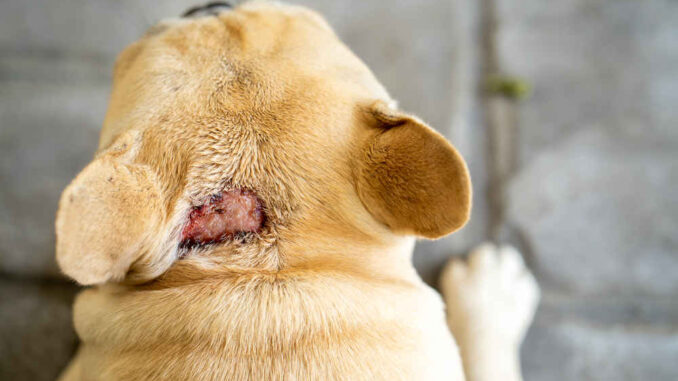
Hot spots are something I see a lot more in the warmer months and it is not uncommon to see one or two patients with hot spots on a busy summer day. When a dog has had them in the past, they are more prone to getting them again. This means their owner should be on the lookout for them, particularly as the weather warms up.
I’ve found that hot spots tend to cause dogs a lot of pain, and they can appear quite quickly. For this reason, owners may first panic when they see them, especially if it is the first one their dog has had. Thankfully, they can be easily treated and most resolve within 1-2 weeks after treatment has begun.
What are hot spots in dogs?
A ‘hot spot’ is the colloquial name for an area of acute moist dermatitis. This is a skin inflammation commonly associated with a secondary bacterial skin infection. The skin will be red and inflamed and we will see a pus discharge that can smell foul. These lesions are also sometimes referred to as ‘pyotraumatic dermatitis’ or even ‘summer eczema’ by some. The intense itch that is created causes the dog to scratch and chew intensely, and this leads to the infection.
Why you need to treat hot spots in dogs on time
The sooner a hot spot can be treated the better. This is for several reasons. Treatment ensures the lesion does not spread and that any bacterial infection does not go into the deeper layers of skin. Also, hot spots are intensely uncomfortable for the dog, and they negatively affect their quality of life.
Indeed, hot spots can be so painful that a dog who was once placid may become short-tempered and snappy. Dogs can go off their food and may be reluctant to play or exercise.
What are the best treatments to treat hot spots in dogs?
1. Clip the fur over the hot spot
From home, there are lots of initial steps we can take to help our canine companions: One of the first things we can do to help these dogs, is to clip the fur over their hot spot. This improves ventilation and decreases the moisture and humidity in the area. This goes a long way towards controlling any infection. Many dogs will be too painful to allow their owner to clip and clean their wound at home. In these cases, some sedation at the vet clinic may be best, in order to do this without causing the dog distress.
2. Use a buster collar
We want to stop any skin aggravation, which will usually mean the use of a buster collar. Most dogs tolerate the soft and inflatable ones more so than the plastic ones.
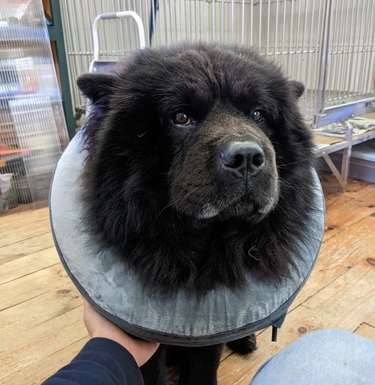
3. Address underlying issues with your vet
Importantly, any underlying issues must be addressed. So, if the dog has an ear infection, this needs to be resolved. Similarly, any fleas on the dog and in their home need to be eradicated.
4. Consider skin supplements
It can also help to strengthen our dog’s skin barriers by giving oral skin supplements that contain ingredients such as probiotics, Vitamin E and fatty acids. Most dogs with underlying skin issues (like allergies) and who are prone to hot spots, will benefit from long term skin and coat supplements. They support the skin and fur, preventing allergens from entering through the skin and preventing dryness and irritation.
I like the Zesty paws chews for my patients, as they’re highly palatable and easy to dose. I’ve found them very useful for reducing flakiness and many owners report back that they’ve helped reduce itching in their dog. Several studies have shown the positive effect that omega 3 fatty acids can have on reducing skin inflammation and improving coat appearance.
- SUPPORTS SKIN AND COAT HEALTH: Packed with Omega-3 fatty acids from wild Alaskan salmon oil for dogs to help maintain moisture content for healthier skin and coat in dogs
5. Bathe the affected area
Finally, it also helps to bathe the area with a medicated wash such as Chlorhexidine, which reduces the amount of yeast and bacteria on the skin.
I’m a huge Chlorhexidine fan, as it is very effective and quite inexpensive. It is also something owners can easily pick up online, without a prescription. It can be applied using cotton wool or with impregnated wipes. It should be used on clipped skin and we apply it once or twice daily for a period of about 5 days. After applying, it is left on for 5 minutes, and is then rinsed off. For most vets, it is the medicated wash of choice when it comes to hot spots, and it is recommended by the AKC.
- Sage 2% Chlorhexidine Gluconate (CHG) Cloths - Two Clothes per Package, 3-Pack
Alternatively, you can use an anti-inflammatory spray such as Vetricyn Hot Spot Spray, which includes potent anti-inflammatories to decrease the itch and soothe the angry skin to break the cycle of your dog’s scratching:
- DOG HOT SPOT CARE: Spray a few times daily to relieve irritated skin that cause excessive scratching, chewing, and licking.
6. Veterinary Care
As well as the above measures, your dog will need to see a vet so they can be prescribed medicine such as steroids, to reduce the itch and inflammation. These can be systemic (given orally) or may be applied topically, depending on the extent of the hot spot. When secondary infections are present, antibiotics will be issued. However, this is not always required.
When is it ok to try home remedies?
It is important to understand that, while home remedies play a role in treatment, dogs with hot spots require prescription medicine. For this reason, they do need to see a vet in person.
This is also key so we can ensure the diagnosis is correct and so any underlying issues can be identified and managed.
Finally, it is not uncommon for dogs to need some sedation to allow us to clip, clean and examine their painful lesions.
What are the causes of hot spots in dogs?
1. Allergies
Dogs can be allergic to things in their environment (like grass and pollen) or in their diet (like chicken or beef). When exposed to their allergen, this can lead to dermatitis and itchiness. Secondary infections such as hot spots frequently occur.
Allergies are incredibly common and they tend to present before the age of five. Any dog can be affected but certain Pedigrees are most at risk, including Labradors, Shih Tzus, Frenchies, Pugs, Bulldogs and Westies.
Avoidance of the allergen is key, when we know what it is. Allergies can also be managed with long-term anti itch medicine as well as medicated washes.
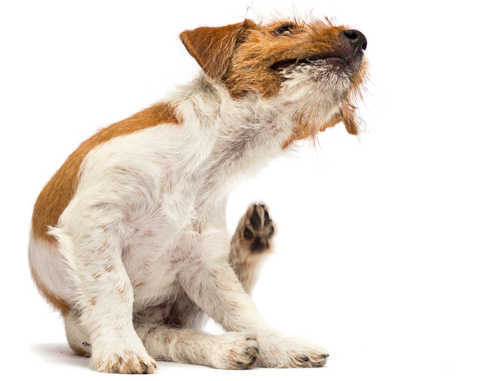
2. Flea hypersensitivity
This is probably the most common underlying cause of hot spots and the rump is often affected. When a dog is allergic to fleas, they over-react to their saliva and an intense itch develops.
Fleas are not always seen as the dog can quickly lick and chew them off. However, if we use a fine tooth comb, we may find some gritty flea dirt.
We can prevent a flea reaction by keeping our pooch up to date with an effective flea prevention. Importantly, any other cats and dogs in the home need to be routinely treated too, otherwise they can act as a source of the fleas.
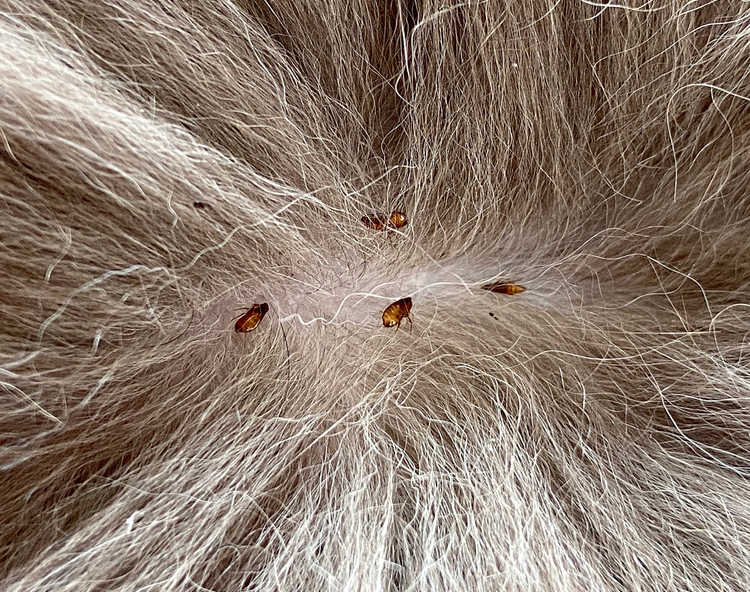
3. An underlying source of discomfort such as an ear infection or blocked anal glands
When your dog has a source of discomfort, their instinct is to rub, chew or lick at it, to try and ease the pain. However, doing so will break the skin and bacteria can then enter. This can lead to painful skin infections and hot spots.
Owners should try and treat any medical issues ASAP, before they create more problems. The sooner an ear infection is addressed, the quicker it responds to treatment. Similarly, emptying blocked anal glands before they develop abscesses, is a no brainer.
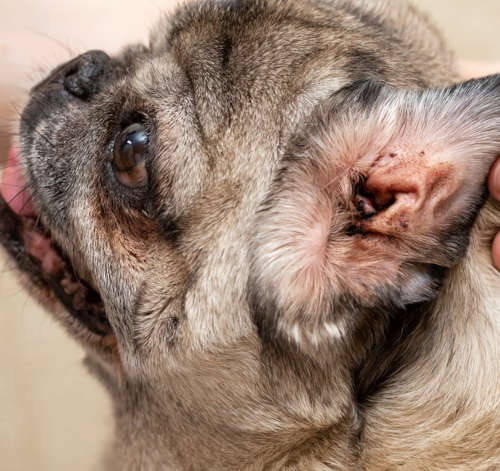
4. Behavioral disorders
Some dogs develop an obsession with compulsive licking or chewing. When this compulsion is focused on a certain part of their body, hot spots can develop here.
It can help to use tools like buster collars and pet t-shirts, but this is just a temporary fix. This sort of behavior is not easily resolved and often involves the input of a behaviorist, as well as a vet who can prescribe the appropriate medication.
Owners should also make a real effort to ensure that all of their dogs physical, emotional and mental needs are being met and that they’re not bored or being left alone for too long.
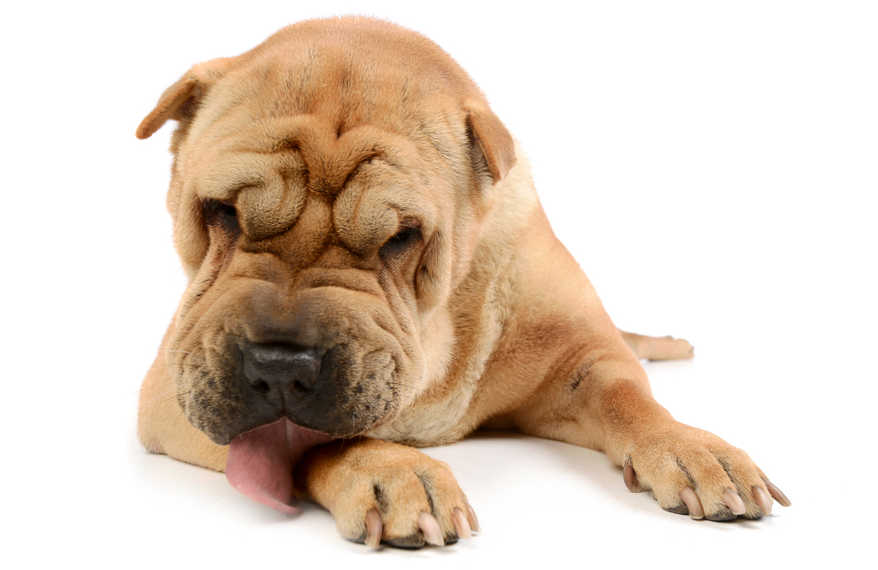
Frequently Asked Questions
• How can I prevent my dog from getting hot spots?
Prevention can be achieved by managing any underlying skin issues (like allergies) and by keeping our pets up to date with their parasite prevention. For dogs prone to hot spots, it is sensible to keep their coat short in the summer and to bathe them with medicated washes routinely.
• Can hot spots lead to death in dogs?
While hot spots can cause intense pain and discomfort, they won’t cause a dog to die. They can spread to other places though, and cause quite significant and deep skin infections. For this reason, the sooner we can address them the better.
Disclaimer: This website's content is not a substitute for veterinary care. Always consult with your veterinarian for healthcare decisions. Read More.





I just wanted to let you know, my rescue, “Chibi” was suffering from a recurring hot spot, in the same area, until I FINALLY figured out what was going on. He does suffer from anxiety and PTSD, from being in an extremely abusive, and neglectful environment with his previous owner, from whom he ran away, but since he’s been with me for 7 years, he’s gotten SO much better. But, he did in the beginning have some compulsive licking, so when this hot spot showed up below the level of his chin, on his neck, I thought he was just repeatedly licking himself there for comfort, due to his high anxiety level. But I noticed that when I gave him his bath and let him run around for a while to dry off the hot spot would almost completely disappear. So I started thinking about what I was doing differently. So I finally got out a pencil and paper and wrote down every single step that I did in his bathing process.
From preparing him for the bath:
(1)Such as combing him, and I don’t use any sprays, lotions, or creams with the comb, (he’s not allergic to any of the materials used in the comb, because I had him tested to see if he was).
(2) Giving him his anxiety medication, (and no, he’s not allergic to the peanut butter that I cover it in, to get him to take it because I had him tested to see if he was).
To bathing him:
(1) I use only shampoo that I get from my veterinarian’s office from his recommendation. It has no harsh chemicals, dyes, or fragrances. It has soothing oatmeal, and everything in it has been cleared as far as allergens for my particular dog.
(2) I make sure to rinse all of the shampoos out of his coat of hair. Then drain the water, rinse the tub, then use the shower sprayer to rinse him out once more, really good.
(3) Get him out of the tub in his own 100% cotton towel, (that’s he also not allergic to, according to tests done) and dry him off vigorously, except where the hot spot is, then I blow dry him just a bit to get a bit more moisture off. But I don’t over-dry because I don’t want to cause any extra irritation to his skin.
Then I just let him run around for about an hour. I let him go outside to go potty and watch him make sure he doesn’t roll around in the dirt. I also am curious to see if he rubs up against anything outside that may be causing his hot spot, which at this point has almost completely disappeared. He doesn’t. He comes in and gets a drink of water, (which is bottled water, and was tested, approved by the Vet, and recommended by one of the Vet techs in the office, as a brand that she gives her pets, who are finicky) and takes a few bites of his lunchtime meal, a senior dog food, recommended by the Vet, (all ingredients cleared after testing for allergens).
Finally, he decides to go for his noontime siesta, so he goes over to his pet bed, inside his kennel cage, and as he’s about to climb in I notice that I haven’t put his collar back on. So I go in the bathroom, pick up his collar, and come back to put it on him. Then lean down to put it around his neck, when I finally notice something. When I place his collar around his neck and fasten it closed, the metal dog tag then lays perfectly in the exact position and shape that the hot spot was formally at. I also realized that I didn’t document in the beginning, when I took the collar off of him. But thinking back to when I did take it off of him, I remembered that the inflammation in the hot spot started to go down, significantly. So at this point I grab my phone and take a quick photo of the area, first lifting the collar and tag, to just see where the hot spot formally was. Then I laid the collar back in place so that the tag was back, directly over the hot spot, and then took my next photo to document my discovery.
I decided to watch the hot spot closely, now that I had put his collar back on. It was considered hypoallergenic, and I got it from my Vet’s office, so I wasn’t concerned about it. But, I NEVER considered the actual tag or the hardware holding the tag on the collar to be something that anybody, or anything, (i.e. animal) could or would possibly have an allergic reaction to. I don’t know why I didn’t consider it. But sure enough, I watched, and within about 30 minutes the hot spot came roaring back with a vengeance. So I took my 3rd photo with the metal tag over the hot spot, and all around the tag was a red, raised, and inflamed ridge of the bare skin of my poor little guy’s neck. It was almost bleeding, it was so inflamed. So once again I lifted the tag and took my 4th picture, which look both horrible and painful. By this time, my “Chibi” started to whimper. That was it. I took that collar off so fast, speed dialed my Vet, told my son to take us to see him immediately, got my dog, got the collar, with the tag, got in the car, and away we went. They got us in in no time at all probably because I pretty much keep their practice up and running, with the money I pay them each month, in Vet bills (I have 3 other dogs as well). Anyway, they told me that I was the 2nd person that month who had called them in regards to this issue. He was allergic to all three metals used in the tags, (stainless steel, brass, and aluminum) and he was allergic to the green paint, used on the tags. Thank goodness we still had an option open to us that was available. White silicon. Allergy-free, color-free, dye-free, and for a bonus, we also got noise-free too. So everything worked out in the end. I also learned a valuable lesson.
***WHENEVER SOMETHING IS GOING ON WITH A PET MAKE YOU ALWAYS DOCUMENT EVERYTHING FROM THE VERY BEGINNING, AS MUCH AS POSSIBLE!!! ***
Hope this helps someone else. Sorry, it was so long. I was bored tonight.